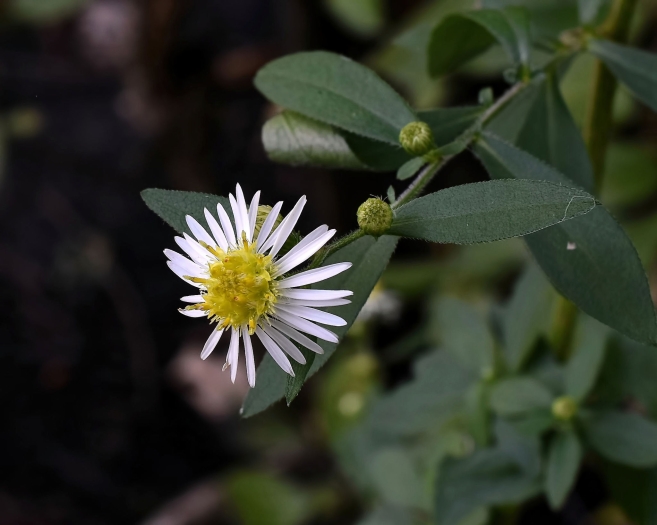Ontario Aster
(Symphyotrichum ontarionis)
Ontario Aster (Symphyotrichum ontarionis)
/
/

davecz2
CC BY-SA 4.0
Image By:
davecz2
Recorded By:
Copyright:
CC BY-SA 4.0
Copyright Notice:
Photo by: davecz2 | License Type: CC BY-SA 4.0 | License URL: https://creativecommons.org/licenses/by-sa/4.0 | Uploader: Eewilson | Publisher: Wikimedia Commons | Title: Symphyotrichum_ontarionis_10666783.jpg | Notes: Transferred from en.wikipedia: see original upload log above |






















































Estimated Native Range
Summary
Symphyotrichum ontarionis, commonly known as Ontario Aster, is a deciduous perennial herb native to moist meadows, riverbanks, and lowland forests in the Central and Eastern USA and Southern Canada. It typically reaches up to 120 centimeters (4 feet) in height with a spread that can be quite robust in ideal conditions. The plant features a clumping form with alternate, simple leaves and branching stems. From late summer to fall, specifically between July and October, Ontario Aster produces an abundance of flower heads, each consisting of numerous tiny florets that collectively give the appearance of a single, larger flower. The blooms are characterized by white ray florets surrounding a center of yellow disc florets, offering a showy display that attracts pollinators.
Ontario Aster is valued for its late-season blooms, which provide color and interest in the garden when many other plants have finished flowering. It is an excellent choice for naturalized areas, rain gardens, and as part of pollinator-friendly plantings. This aster thrives in part shade to full sun and requires medium amounts of water, preferring soils with good moisture retention but adequate drainage. While generally low-maintenance, it can be susceptible to powdery mildew in humid conditions and may require division every few years to maintain vigor.CC BY-SA 4.0
Ontario Aster is valued for its late-season blooms, which provide color and interest in the garden when many other plants have finished flowering. It is an excellent choice for naturalized areas, rain gardens, and as part of pollinator-friendly plantings. This aster thrives in part shade to full sun and requires medium amounts of water, preferring soils with good moisture retention but adequate drainage. While generally low-maintenance, it can be susceptible to powdery mildew in humid conditions and may require division every few years to maintain vigor.CC BY-SA 4.0
Plant Description
- Plant Type: Herb
- Height: 1-4 feet
- Width: 1-3 feet
- Growth Rate: Moderate
- Flower Color: White, Yellow
- Flowering Season: Summer, Fall
- Leaf Retention: Deciduous
Growth Requirements
- Sun: Full Sun, Part Shade
- Water: Medium
- Drainage: Medium
Common Uses
Bee Garden, Bird Garden, Butterfly Garden, Low Maintenance
Natural Habitat
Moist meadows, riverbanks, and lowland forests
Other Names
Common Names: Ontario Aster
Scientific Names: Symphyotrichum ontarionis , Aster ontarionis , Symphyotrichum ontarione , Aster pantotrichus , Aster ontariensis , Aster missouriensis , Aster diffusus var. thyrsoideus , Aster lateriflorus var. thyrsoides , Aster lateriflorus var. thyrsoideus , Aster tradescantii var. thyrsoideus
GBIF Accepted Name: Symphyotrichum ontarionis (Wiegand) G.L.Nesom